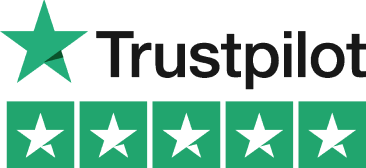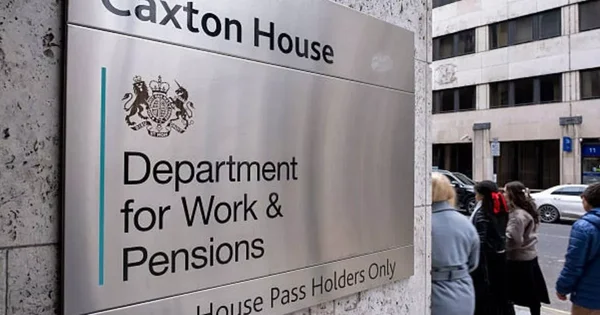Let’s Break This Down Together...
Not sure if your side hustle counts as trading or just a one-off? You’re not alone, working out what to tell HMRC can feel like walking a tightrope in the dark.
This guide untangles the difference between trading and casual income, covers HMRC’s nine “badges of trade”, and shows when you’ll need to register for self-assessment. We also look at the £1,000 trading allowance, tax implications, and why good records really matter.
By the end, you’ll feel more confident knowing where your income stands and what to do next. Let’s dive in.
So What's Actually the Difference Between Trading Income and Casual Income?
Trading income comes from activities that HMRC considers to be a business. This means you’re regularly selling goods with the intention of making a profit.
Casual income is more like occasionally selling unwanted personal items. Casual services, such as babysitting or gardening, can also generate casual income. Think of clearing out your wardrobe on eBay or selling an old phone when you upgrade.
The key difference isn’t just about how much money you make. HMRC looks at your intention and behaviour using something called the “badges of trade”.
If you’re trading, you’ll need to register for self-assessment. You’ll pay income tax plus National Insurance on your profits. Casual income typically doesn’t need to be reported to HMRC at all. It’s not considered taxable income in most circumstances.
Miscellaneous income, such as one-off payments or irregular earnings, is treated differently from trading or casual income for tax purposes.
The Nine Badges of Trade HMRC Uses
HMRC uses nine key indicators to decide if you’re trading:
Profit-seeking motive: Are you selling to make money rather than just clearing space?
Frequency of transactions: Regular, repeated sales suggest trading rather than one-offs. For example, selling items every weekend at a market is an example of frequent transactions that indicate trading.
Nature of items: Selling commercial-type goods rather than personal possessions points to trading.
Modifications to items: If you improve or alter items before selling, that looks like trading.
How the sale was carried out: Using business-like methods suggests trading activity.
Source of items: Buying things specifically to resell them is a strong trading indicator.
Time between purchase and sale: Quick turnarounds suggest trading activity.
Method of financing: If you borrowed money to buy items for resale, that indicates trading.
Connection to existing trade: If sales are similar to your existing business, they may be viewed as trading.
No single factor determines your status. HMRC looks at the overall picture when making their assessment.

When Does Casual Income Become Trading Income?
That car boot sale you do every month could cross into trading territory. Especially if you’re buying stock specifically to sell there. Selling regularly on eBay, Vinted or Facebook Marketplace might become trading. The key factors are frequency and profit intention.
Even if you think it’s just a hobby, HMRC might see it differently. I learned this the hard way when my weekend antique flipping hobby caught HMRC’s attention.
The £1,000 trading allowance is useful here. If your gross trading income is under this amount, you don’t need to report it. This is known as claiming full relief, meaning your income is fully covered by the allowance and you have no tax liability.
If your income is £1,000 or less, you do not need to report this income to HMRC, as it qualifies for tax exemption under the trading income allowance. But be careful this £1,000 is the total sales, not your profit after expenses.
Tax Implications of Trading vs Casual Income
If HMRC decides you’re trading, you’ll need to register for self-assessment. You’ll then complete a self assessment return each year. The assessment return is required to accurately report your income, deductions, and any relief claims.
You’ll pay income tax on your profits at your normal rate. Most small traders are basic rate taxpayers, paying 20% on their taxable income, but higher rates of 40% or 45% may apply depending on your income level. Taxes are calculated based on your taxable trading income after all deductions and reliefs.
You’ll also need to pay National Insurance contributions. Casual sellers don’t have to worry about this. The good news for traders is you can deduct legitimate business expenses. These expenses are deducted from your gross income before calculating your taxable profit. Deducting allowable expenses reduces your taxable trading income and the amount of taxes you owe.
Only expenses that have been correctly claimed and deducted can be used to reduce your tax bill. If your trading income exceeds the allowance, you will need to pay tax on the excess. When you receive income, be aware that fees or charges may be deducted before the income is paid into your account. This affects the calculation of your gross and net income for tax purposes.
If you use the cash basis accounting method, you report income when it is actually received and expenses when they are paid, which can simplify your record-keeping and affect how you claim expenses and reliefs. Property income is subject to its own allowance and reporting requirements, separate from trading income. Other income, such as employment or investment income, must also be reported on your tax return.
Self employed income is subject to the same rules regarding allowances and expenses as trading income. Certain benefits, such as maternity allowance, may be affected by your reported self employed income.
Casual income is generally tax-free. It’s usually considered disposing of personal items at a loss, even if you make a small profit.

Common Examples and Grey Areas
Selling your old mobile phone when you upgrade is clearly casual income. There's no intention to trade here. Buying phones in bulk to refurbish and sell online is definitely trading income. The intention to profit is clear.
The grey area? Perhaps you've developed a knack for finding bargain phones. If you sell a few each month, this could go either way.
Cryptocurrency trading is another common grey area. Occasional buying and selling might be casual, but frequent trading looks like business.
Renting out a room through Airbnb occasionally is probably casual. Multiple properties or year-round lettings would likely be seen as trading.
Records and Accounting: Why Good Bookkeeping Matters
When it comes to trading income and claiming the trading allowance, good bookkeeping isn’t just a nice-to-have it’s essential. Whether you’re running a side hustle, selling online, or earning self employment income, keeping accurate records is the foundation for staying on the right side of HMRC and making the most of your tax free allowances.
Why does this matter? For starters, you’ll need to show evidence of your gross trading income and any business expenses if you want to claim the trading allowance or deduct actual expenses. This is crucial when it’s time to complete a self assessment tax return.
If you’re self employed or have more than one source of income, keeping your business activities organised is even more important. Good records help you distinguish between gross income and taxable income.This distinction is key when deciding whether to use the trading allowance or claim actual business expenses whichever is more beneficial for reducing your taxable profit and lowering your tax bill.
The trading allowance is a tax free allowance of up to £1,000, designed to simplify things for small traders and those with casual income. If your gross trading income is £1,000 or less in a tax year, you can claim the trading allowance and may not need to complete a self assessment tax return at all. But if your income goes over this threshold, you’ll need to report it to HMRC and pay income tax on your profits.
It’s also worth noting that the trading allowance is separate from your personal allowance the amount of income you can earn before you start paying tax. You can claim both the trading allowance and your personal allowance, which can help reduce your taxable income even further.

How to Protect Your Position
Keep records of all your sales. Note the original purpose of items you sell whenever possible. For personal items, try to document that you used them before selling. Photos with timestamps can help establish this.
Track the frequency and pattern of your sales. Sporadic selling looks more casual than regular weekly sales. If you're unsure about past activities, consider a voluntary disclosure. This is better than waiting for HMRC to investigate.
When your situation isn't clear-cut, get professional tax advice. It can save you money and stress in the long run.
Final Thoughts
The line between trading and casual income isn't always clear. Intention and pattern are key factors in HMRC's assessment. HMRC is getting better at spotting undeclared trading income. Online platforms now share data with tax authorities.
When in doubt, keep good records and remember the £1,000 trading allowance. It gives you some breathing room if you're just starting to sell.
Most importantly, if your selling activity starts to look like a business, treat it like one. Better to be compliant from the start than face penalties later.
Pie tax: Simplifying Trading vs Casual Income UK Tax
Knowing whether your income counts as trading or casual shouldn't give you a headache. The UK's first personal tax app, Pie tax, analyses your income patterns and suggests the correct tax treatment automatically.
Our dashboard clearly separates different income streams. This ensures you claim the right allowances for each type of income you receive.
As your situation changes throughout the year, our real-time tax calculation adjusts instantly. No more year-end surprises when you finally work out what you owe.
When it's time to file, we'll prepare everything in the correct format. You'll have confidence that your submission to HMRC is accurate and complete.
Want to see how it works? Explore the Pie tax app to discover how we can make your tax life simpler.

Quick and Easy Guide to Add Mutilple Income Sources
Follow these steps to add multiple income sources and track real time tax figures in the Pie app
Open the Pie Tax App and find the 'Quick Add' button in the middle of the navigation bar and select 'Create Income Type' from the top of the screen to open the options menu. Fill in the details for your chosen income type, then Save. You can always view or edit this income in “All Incomes.”Step 1

You can view your real-time tax figures directly on the Pie App homepage. This lets you instantly see how any new income affects your overall tax position.Step 2










